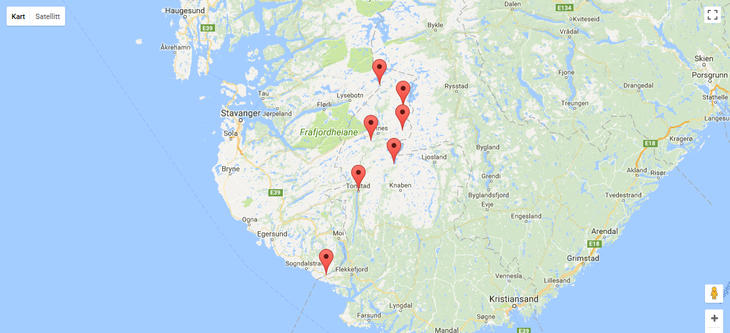Sira-Kvina
Sira-Kvina covers seven power plants that use water from the counties Aust-Agder, Vest-Agder and Rogaland. Skagerak Kraft owns 14.6 per cent of power production operated by the power company Sira-Kvina kraftselskap.
Sira-Kvina watercourse system uses water from the counties Aust-Agder, Vest-Agder and Rogaland. The catchment area is around 2,700 square kilometres. Annual production from the power plants in the watercourse corresponds to about 5 per cent of Norway’s power production. Sira-Kvina kraftselskap was established in 1963 with a view to developing the power sources in Sira and Kvina watercourses. Today, Skagerak Kraft owns 14.6 per cent of production through its ownership in Sira-Kvina kraftselskap.
Kvina watercourse is diverted into the Sira watercourse in order to utilise a combined hydraulic head ending at Tonstad Power Plant, which is among the biggest power plants in Norway. From there, the water continues towards Åna-Sira, where it flows into the sea. A total of seven power plants with tunnel systems and regulation reservoirs have been developed. Both Svartevann and Roskrepp are among the best regulated multi-year reservoirs in Norway.
Environmental measures have been implemented voluntarily in both parts of the watercourse system. On the Kvina side, a minimum flow has been established with special stone deposits for migratory salmon in certain stretches. At the foot of the Svartevann dam, an artificial marsh area has been established as an important environmental mitigation measure in connection with quarrying for the dam rehabilitation project.
*The figures refer to plants where Skagerak Kraft holds an ownership interest.













